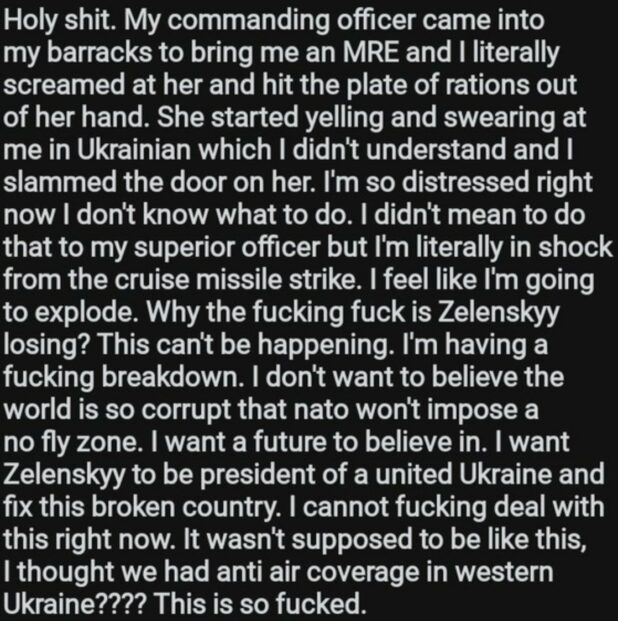No one knows how many Russian soldiers have died, other than the Russian government.
Announcing “between 7 and 15 thousand” is a pretty wide range.
However, neither casualty count nor timescale are relevant to the obvious eventual outcome of this conflict. Assuming NATO does not invade, the Ukraine either has to agree to negotiate, or just continue losing territory and soldiers.
It should be noted that there is a large body of soldiers in the center of the country that could be slaughtered by the Russians at any time if they wanted to, but the Russians don’t want to slaughter them and they don’t want to disrupt the planting season on the farms.
These Ukrainian troops are currently in a “caldron.” Let me just pull up the most recent map here…
Oh. @MapsUkraine is banned. That just happened in the last few hours. Twitter might have just outright banned maps. Anyway, you all remember what the map looks like.
AP:
NATO estimated on Wednesday that 7,000 to 15,000 Russian soldiers have been killed in four weeks of fighting in Ukraine, where the country’s defenders have put up stiffer-than-expected resistance and denied Moscow the lightning victory it hoped for.
A senior NATO military official said the estimate was based on information from Ukrainian officials, what Russia has released — intentionally or not — and intelligence gathered from open sources. The official spoke on condition of anonymity under ground rules set by NATO.
When Russia unleashed its invasion Feb. 24 in Europe’s biggest offensive since World War II and brandished the prospect of nuclear escalation if the West intervened, a swift toppling of Ukraine’s democratically elected government seemed likely.
It seemed likely to who?
Western officials and media personalities made these claims, then acted surprised that their own claims were wrong. Many of them never even made these claims but pretended to have made these claims.
Russia never gave a timeframe. They couldn’t have, because there were too many unknowns. The official statement from Sergei Lavrov could be translated as “it will be over when it’s finished.”
Obviously, if Russia was willing to just indiscriminately slaughter civilians in the way that the US did in Baghdad, this would have gone a lot faster.
However, there is no real evidence that “taking” Kiev is even a part of the Russian agenda. You can’t do door-to-door clean-outs of cities.
But with Wednesday marking four full weeks of fighting, Russia is bogged down in a grinding military campaign, with untold numbers of dead, no immediate end in sight, and its economy crippled by Western sanctions. U.S. President Joe Biden and key allies are meeting in Brussels and Warsaw this week to discuss possible new punitive measures and more military aid to Ukraine.
As Biden left the White House on Wednesday for the flight to Europe, he warned there is a “real threat” Russia could use chemical weapons and said he will discuss that danger with the other leaders.
The war’s economic and geopolitical shockwaves — with soaring energy prices, fears for global food supplies, and Russia and China aligning in a new world order with Cold War echoes — have reverberated across a planet yet to emerge from the COVID-19 crisis.
Firstly, it’s not a war.
Secondly, it didn’t have any “shockwaves” outside of Western sanctions. The Ukraine has no relevance to the global economy. It’s the poorest country in Europe by a lot, and is poorer than many third world countries. All of the “shockwaves” are the result of Western government decisions.
Note the similarities to Western governments saying “Covid destroyed the economy and took everyone’s freedom from them.” Actually, the governments themselves did those things, ostensibly in response to the alleged virus, and then claimed that there was literally no other possible response (because after all, every Western government did the exact same thing, and it’s not like there is some kind of globalist body guiding all of these governments).





